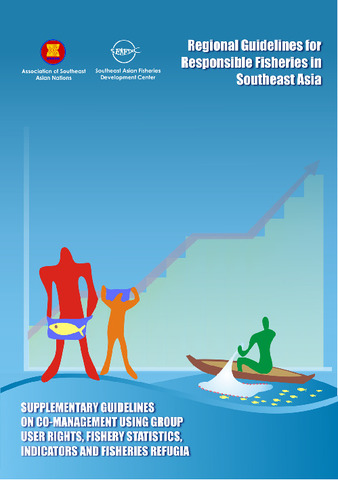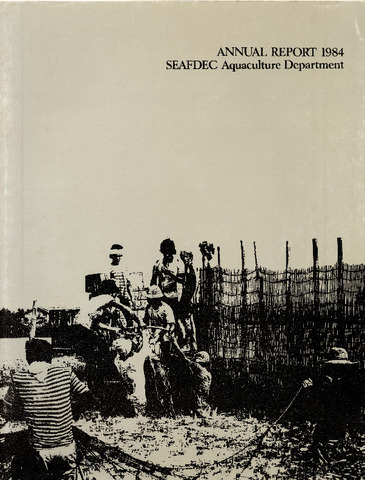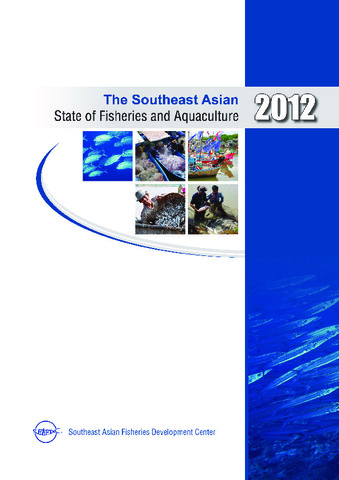បង្ហាញកំណត់ត្រាសាមញ្ញសម្រាប់ធាតុ
Hidden in Plain Sight: freshwater whiprays of Southeast Asia and their ecological significance
Share
| dc.contributor.author | Arshaad, Wahidah Mohd | |
| dc.contributor.author | Yusof, Hamizah Nadia Alias@ | |
| dc.contributor.author | Nor, Rosdi Mohd | |
| dc.coverage.spatial | Southeast Asia | en |
| dc.coverage.spatial | Malaysia | en |
| dc.date.accessioned | 2024-10-21T02:54:43Z | |
| dc.date.available | 2024-10-21T02:54:43Z | |
| dc.date.issued | 2024-10 | |
| dc.identifier.uri | http://hdl.handle.net/20.500.12066/7523 | |
| dc.description.abstract | Freshwater whiprays, belonging to the families Dasyatidae and Potamotrygonidae, are unique stingrays thriving in low-salinity environments such as rivers and lakes. Southeast Asia is the habitat of at least five whipray species belonging to the Dasyatidae family, namely: Fluvitrygon signifer, F. kittipongi, F. oxyrhynchus, Urogymnus polylepis, and U. dalyensis. SEAFDEC Marine Fishery Resources Development and Management Department (MFRDMD) explored the distribution patterns and conservation status of freshwater whiprays in Malaysia and Southeast Asia, highlighting the significant ecological roles and threats. Through DNA barcoding, the genetic diversity and phylogenetic relationships were examined among whipray populations, revealing distinct geographical clusters and considerable conservation concerns. The findings underscore the need for targeted conservation measures, including habitat protection, pollution control, and sustainable fishing practices, to ensure the survival and ecological integrity of freshwater whiprays. Continuous research and monitoring are essential to address the gaps in biodiversity knowledge and to implement effective conservation strategies in Southeast Asia. | en |
| dc.language.iso | en | en |
| dc.publisher | Secretariat, Southeast Asian Fisheries Development Center | en |
| dc.subject.lcsh | Dasyatidae | en |
| dc.subject.lcsh | Potamotrygonidae | en |
| dc.title | Hidden in Plain Sight: freshwater whiprays of Southeast Asia and their ecological significance | en |
| dc.type | magazineArticle | en |
| dc.citation.volume | 22 | |
| dc.citation.issue | 2 | en |
| dc.citation.spage | 9 | en |
| dc.citation.epage | 15 | |
| dc.citation.journalTitle | Fish for the People | en |
| dc.subject.asfa | shark fisheries | en |
| dc.subject.asfa | geographical distribution | en |
| dc.subject.asfa | DNA barcoding | en |
| dc.subject.asfa | conservation | en |
| dc.subject.asfa | marine ecosystems | en |
| dc.subject.asfa | morphology | en |
| dc.subject.asfa | genetic diversity (as resource) | en |
| dc.subject.scientificName | Fluvitrygon signifer | en |
| dc.subject.scientificName | Fluvitrygon kittipongi | en |
| dc.subject.scientificName | Fluvitrygon oxyrhynchus | en |
| dc.subject.scientificName | Urogymnus polylepis | en |
| dc.subject.scientificName | Urogymnus dalyensis | en |
| local.subject | Freshwater whipray | en |
| local.subject | Dasyatidae | en |
| local.subject | distribution | en |
| local.subject | Southeast Asia | en |
| local.subject | DNA barcode | en |




